The emergence of a rich literature on the pope and the papacy (+ weekly roundup)
The silver lining on our very dark clouds is a newfound depth of historical, cultural, and theological analysis
In keeping with this past Monday’s article about the statement on Pope Francis’s crimes and heresies, I would like today to talk about the emergence in our days of a rich literature on the pope and the papacy — a veritable renaissance of theological discussion, which one might see as the “silver lining” on the very dark clouds that oppress us.
Along these lines, I’m delighted to announce the release of a new book from Os Justi Press — the latest volume in the Os Justi Studies in Catholic Tradition series (you can see all 13 listed here), entitled Unresolved Tensions in Papal-Episcopal Relations: Essays Occasioned by the Deposition of Bishop Joseph Strickland, and edited by yours truly.
The volume brings together essays and articles by 14 authors who wrestle with ecclesiological and canonical questions prompted by some of the tyrannical acts of the present Roman Pontiff, using this as a springboard for a broader consideration of what, exactly, are the rights and duties of a bishop. The book has an incisive Foreword by Dr. Joseph Shaw, not published anywhere else (although I may decide to share it here at T&S one day); a preface; 17 chapters; an epilogue; 4 appendices; a bibliography and an index.
The centerpiece of the book is a respectful but intense debate between José Antonio Ureta and John Lamont concerning whether a bishop who has been unjustly deposed by the pope should accept his deposition as a valid act of papal jurisdictional primacy (even if it be an illicit or sinful one), or should rather refuse to acknowledge it and remain in his see. Ureta argues strenuously for the former position, which he calls “traditional”; Lamont argues equally forcefully for the latter position, which he says is the only one that is compatible with divine law and with reason itself. Each writer marshals quotes from classic authors on behalf of his side. It’s one of the best high-level debates I’ve seen in years. While I agree with Lamont’s position, I do recognize that Ureta’s counterpoints deserve the serious consideration of any Catholic thinker who seeks the truth in these difficult and subtle topics.
Stepping back to look at the anthology as a whole, I will simply say, as one who reads widely and voraciously, that there is nothing like this book in print. I’m not even sure there’s ever been anything like it. The spirit of ultramontanism that has dominated for over 150 years has blocked earnest inquiry into the inherent and (to a degree) independent authority of bishops by crying “conciliarism!” or “Gallicanism!” the moment someone dares to suggest that the papacy may not be an absolute monarchy from which all ecclesial power flows.
Some progressives around the time of Vatican II were keen to cut the liberal bishops loose from Rome, but their motivations were evil and their arguments puerile. This book is different, as it delves into Church history, theology, and canon law to understand the mutual relations, rights, and responsibilities of the pope and the bishops toward each other and toward the Mystical Body of Christ, which is prior to and determinative of their offices.
Unresolved Tensions is available in paperback, hardcover, or ebook. Read more about it, peek inside, and order it at Os Justi Press here, or at Amazon here (paperback and hardcover listings at Amazon are unlinked, so you have to go to a separate listing for hardcover). International readers will find the book at any Amazon site.
[N.B. The first batch of hardcovers, 15 in number, arrived with a small error on the dustjacket: the line “Os Justi Studies in Catholic Tradition 13” is flush left instead of centered. Otherwise, everything is fine with the books. These 15 copies are on sale for 20% off here. All the rest of the hardcovers will not have that little touch of asymmetry. Will it someday be worth something, like a defective run of postage stamps? Who knows…]
Now I’d like to turn my attention to other examples of the rich literature I mentioned at the start.
These five books make a formidable library on the topic of the modern papacy and on Pope Francis in particular.
Defending the Faith Against Present Heresies, edited by John Lamont and Claudio Pierantoni (Arouca Press, 2021) is the definitive guide to the debate over Amoris Laetitia , although it covers a wide range of issues. The volume includes the following historic documents with their signatories:
the Dubia of the Four Cardinals;
the Theological Censures of Amoris Laetitia;
the Filial Correction Concerning the Propagation of Heresies;
the Open Letter to the Bishops of the Catholic Church;
the Appeal to the Cardinals (concerning the death penalty);
the Protest against Pope Francis's Sacrilegious Acts.
(It’s worth noting that these six documents form an escalating series, a logical progression that culminates in the May 2, 2024 statement calling for the resignation or deposition of Pope Francis.)
The six documents are accompanied by a selection of articles and interviews prompted by them, which criticize, defend, or develop their evaluation. When it first came out, I put up a review at Rorate with lots of information and photos.
This book is available from all Amazon sites EXCEPT in the United States. It appears that a certain unhinged lady claimed the work violated copyright (which it doesn’t), and that was enough for Amazon.com to remove it. This is why I now carry it in the Os Justi online bookstore.
Ultramontanism and Tradition needs little introduction to readers of T&S, as we have discussed it here before (those who wish to find out more should take a look at the Rorate announcement). Suffice it to say that this formidable anthology of 50 essays by 26 of the sharpest Catholic writers of our day, ranging from Cardinal Burke and Bishop Schneider to Charles Coulombe, Roberto de Mattei, Edward Feser, John Joy, John Lamont, Sebastian Morello, Martin Mosebach, Thomas Pink, Joseph Shaw, and Henry Sire, is an unparalleled examination of the full range of issues connected with the historical movement and theological trend of ultramontanism.
The Synodal Pope: The True Story of the Theology and Politics of Pope Francis by Jean-Pierre Moreau (TAN Books, 2024) is a recent book that hasn’t yet attracted the attention it deserves. You can read a review of it by Julia Meloni here. I can only say, it’s not for the weak of stomach. What the author has dug up in the way of evidence is damning and fully supports the charges we have made against the pope in the statement of May 2.
The publisher describes it thus:
In The Synodal Pope: The True Story of the Theology and Politics of Pope Francis, Jean-Pierre Moreau traces the history and theological development of Pope Francis from his upbringing in Argentina and formation by the liberationist Jesuits. Moreau, a keen observer of liberation theology, many of whose leading figures he personally met when he was a special correspondent for the Figaro-Magazine in the 1980s, has made a close study of the personal and intellectual itinerary of Jorge Mario Bergoglio, described by his closest supporters as professing the “theology of the people.” This particular focus on “the people” has theological and political underpinnings that many modern commentators do not grasp fully. It lies at the heart of understanding the Synod on Synodality.
This is why Pope Francis puts so much emphasis on the “signs of the times” and on history. These are the new tools at the service of a doctrine that is inherently evolutionary. This book sheds light on the “real Bergoglio” and the real influences behind him. It is anything but a catalogue of trivia about Pope Francis’s “governance”: rather, it shows his deep-rooted coherence and true affiliations (which go back further than is generally imagined), and more importantly, it reveals the truly revolutionary nature of his idea of “synodality.” If you want to understand this term from its genesis, this book is a must-read.
Super Hanc Petram: The Pope and the Church at a Dramatic Moment in History by Fr. Serafino Lanzetta (Os Justi Press, 2023) is a calm and penetrating introduction to major themes and goals in Francis’s pontificate, seen against the backdrop of (or rather, in contrast to) the Petrine office. Fr. Lanzetta illustrates how we find in Francis:
the return of nominalism and pragmatism;
the elevation of pastoral care over doctrine;
the proclamation of a mercy that severs charity from truth;
the substitution of “a people on the move” for “the mystical body” and of a panreligious humanistic fraternity for the salvific Christian mission;
the inversion of hierarchy by synodality;
the selective use of Vatican II as an impetus for “paradigm shifts”;
an evolutionary vision of doctrinal development driven by sociological-cultural theories; and
the supplanting of eschatology by ecology.
Read more in this review.
Infallibility, Integrity and Obedience: The Papacy and the Roman Catholic Church, 1848-2023 by John Rist — an esteemed philosopher and a courageous witness to the Church’s perennial moral doctrine — is, of the books noted in this post, the only one with which I would have a theological quarrel, as the author’s view of the papacy strikes me as Gallican. Nevertheless, Rist is a wise observer of human affairs, and one stands to learn a lot from reading him. This book is worth including among the others because it, too, contributes to the long overdue re-examination of the skewed “weights and measures” used in the Catholic Church.
Turning now from the six books to the “weekly roundup”...
Fr. Clay Hunt, the “Cowboy Priest”
Fr. Hunt posted three videos (1, 2, and 3) about my keynote address in Texas concerning the immutable authority of the traditional Roman Rite and the freedom to adhere to it. He is a fine priest, a thoughtful man, who ponders the truth long and hard, and passes on to others the fruits of his meditation.
Incoming Hannon-fire
Credit where credit is due. Word on Fire (yes, Bishop Barron’s enterprise!) published an article by Urban Hannon, adapted from the introduction to his excellent little book Thomistic Mystagogy, in which he makes a case for the way traditional liturgy works (and, without saying it expressly, against the main suppositions of the Novus Ordo). I'm glad to see they welcomed a different voice. You can read it here.
Unfortunately, Bp. Barron didn’t fare so well when he claimed that the liturgical descriptions of St. Justin Martyr in the 2nd century lend support to the Novus Ordo. This is nothing other than the error of archaeologism or antiquarianism, which may be defined as follows:
Archaeologism is not so much a heresy as a fad, a certain approach to Catholic liturgy and practice. Its distinguishing characteristic is an excessive value placed on those Catholic practices which came earlier in historical-chronological succession. For the archaeologist, first is always best. A practice or prayer of the patristic Church is “better” or “purer” than a practice of the medieval Church. Consequently, the goal of any true liturgical renewal ought to be to return to the practice of the first Christians, inasmuch as possible. The modern Church ought to imitate the apostolic Church.
Over at his blog, my friend Fr. Dave Nix has written two nice pieces (Part 1, Part 2) on this error, showing how the Church has condemned it repeatedly. It’s something I’ve written about a lot — a chapter in Reclaiming Our Roman Catholic Birthright and a chapter in Once and Future Roman Rite, among others — but, like a noxious weed, the error keeps springing up.
Why does knowledge bring sorrow?
In the category of “my favorite recent piece of writing,” I offer to you the beautiful and profound piece at Unam Sanctam Catholicam on why “with much knowledge cometh much sorrow.” A taste:
The attainment of wisdom can bring joy and sorrow, for the City of God and the City of Man are in antithesis. They are not only divergent destinations, but each have their own contradictory value systems as well. What makes one great in the City of God is despised in the City of Man, and what brings success in the City of Man excludes one from the City of God. Money is the currency of the City of Man, while prayer is the currency of the City of God. Power is esteemed in the former, meekness in the latter. Pride motivates in one, humility in the other. The City of Man is built upon selfishness, the City of God upon sacrifice.
Thus, if we grow in the virtues that are valued in the City of God, we will find less comfort in the City of Man. With each passing day our status as pilgrims will become more evident. We feel more profoundly our position as outsiders in this world. With Christ, we learn to say, “My kingdom is not of this world”; with St. Paul, we profess that “here we have no lasting city” (John 18:36; Heb. 13:14). We imbibe these words deeply, appropriating them to our own experience and making them the pulse in our veins. The things of this world make less and less sense to us. We perceive life as “this, our exile,” as the classic Marian hymn Salve Regina calls it. The greater our orientation towards the Kingdom of God, the greater our estrangement from the things of this world.
Read the whole thing, it’s very insightful.
This Scripture verse (“with much wisdom cometh much sorrow”) has long been a favorite of mine, but I’ve always thought of it in connection with the peculiar sorrow that grips the heart and mind of a Catholic when he or she, having learned more and more about the Roman Rite, the Holy Mass, the Divine Office, the monastic life, the old theology — all the ways our faith used to be, from one end of the earth to the other — then ponders the ruination, the wreckage, the catastrophe, the nuclear holocaust, that came during and after Vatican II and reaches to the present.
This sorrow concerns the very bride of Christ on earth, her disfigured countenance, her tattered garments, her impoverished hovel, her condition of bitter exile in which all of us partake.
I don’t deny that the spiritual distance between us and Christ, between us and heaven, is the real root problem, existentially speaking; and we know that if we remain faithful to Him, we will eventually reach the land where there is no darkness, no evil, no sorrow. I am merely pointing to a specific sorrow of our era that has no exact parallel before, since never before had the Church treated her patrimony the way it was treated by Paul VI and those who aided and abetted him. Maybe the closest parallel would have been the way the Israelites felt when they were dragged off to Bablyon as exiles and their temple was burned down.
“A who’s who of dissent”
Just so you’re fairly warned about whose Substack you’re reading…
A review of “Guardians of Tradition” (MOTA Episode 3, which, by the way, now has 600,000 views on YouTube) appeared on the Substack Black Catholic Messenger. According to the author, the film features a veritable “who’s who of dissent” — and then proceeds to name Bishop Schneider, Bishop Strickland, Scott Hahn, Timothy Flanders, Timothy Gordon, and me. That’s right: move over, Luther, Calvin, Zwingli, Melanchthon, Cranmer, here we come!
Maybe the author is good pals with Mike Lewis. That would explain a lot.
Meanwhile, here’s Dr. Joseph Shaw’s more credible review of the same episode 3, in Una Voce Bulletin Number 5:
Social media, above all photos and text but also video testimonials, has long been one of the strongest arms of the movement for the Traditional Latin Mass. From the early age of the blogs, 20 years ago, it was possible for supporters of Tradition to produce content that outshone often poorly presented official Church websites. Progressive Catholics, used to controlling official channels of communication, were slow to respond, and when they did the results were often embarrassingly bad…
Those searching for an image of ‘Mass’ and similar terms, or for videos about Latin liturgy, find vast numbers of positive images and messages from Traditional Catholics…. Precisely because it is uncoordinated, it is both unstoppable and unanswerable. Who can deny that the photographs look nice? Who can contradict the experience of the sacred received by these young people?
We have moved into another phase of this apostolate now, with the completion of a trilogy of full-length films about the Traditional Mass, produced by a highly professional team of young film-makers…. These films combine personal stories, historical information, and reasoned argument, in a highly effective way: engaging, informative, and moving. In the final film of the series, as well as me you will find contributions from mainstream Catholic apologists such as Scot Hahn, Fr Joseph Fessio, and Patrick Madrid, alongside the background to Traditionis custodes, the walk to Rome by the French mothers of priests, the testimony of Traditional Catholics in Africa and Mexico, and the unfeigned joy of the young female traditional community of the Benedictines of Mary.
The impact of social media on the debate surrounding the Mass over the last twenty years is difficult to overstate. While we may decry its negative aspects, which are certainly real, we must be grateful to those who have contributed in all sorts of way to the positive ‘buzz’ around the Traditional Mass, which time and again leads young Catholics to try it out. If they experience it, then they can make an informed decision about it. As we know, many like it; for some, it leads to a profound conversion of life.
It is clear that, at the very least, a sizable minority of Catholics like what they see when they first experience the Traditional Mass, and yet the number who actually attend the TLM is relatively tiny. The problem is that the overwhelming majority of Catholics today have never seen the TLM, and most of them know nothing about it.
This puts our opponents in a dilemma. If they remain silent on the liturgical question, they leave the debate entirely to us. But if they denigrate us, and try to prohibit the ancient liturgy, they alert their audience to the fact that this Mass exists, and may be worth googling. This is something the creators of Traditionis custodes are learning to their cost.
To all the ‘content creators’ out there, and especially to the guys behind Mass of the Ages: thank you!
Yes, thank you, Cameron and the rest of the MOTA team, for giving us a trilogy for the mind and for the heart, which has already brought so many souls back to Christ and His Church, while leading others further, deeper, into the treasury of tradition, that living and life-giving fountain.
And thank you, dear readers, subscribers, and patrons of Tradition & Sanity. May Our Lady whose month we celebrate intercede for you and yours.


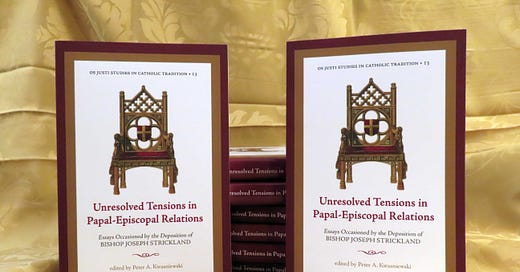



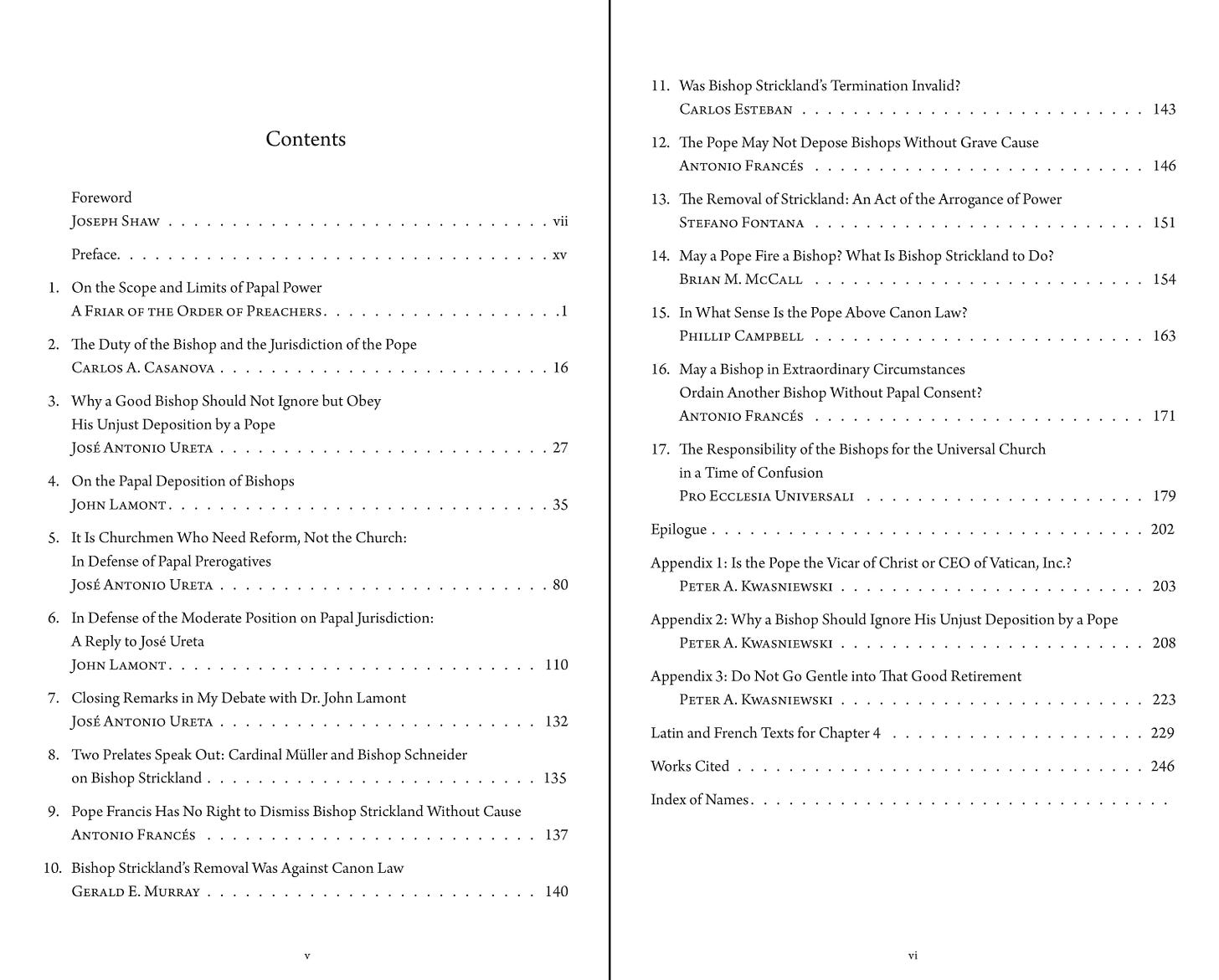
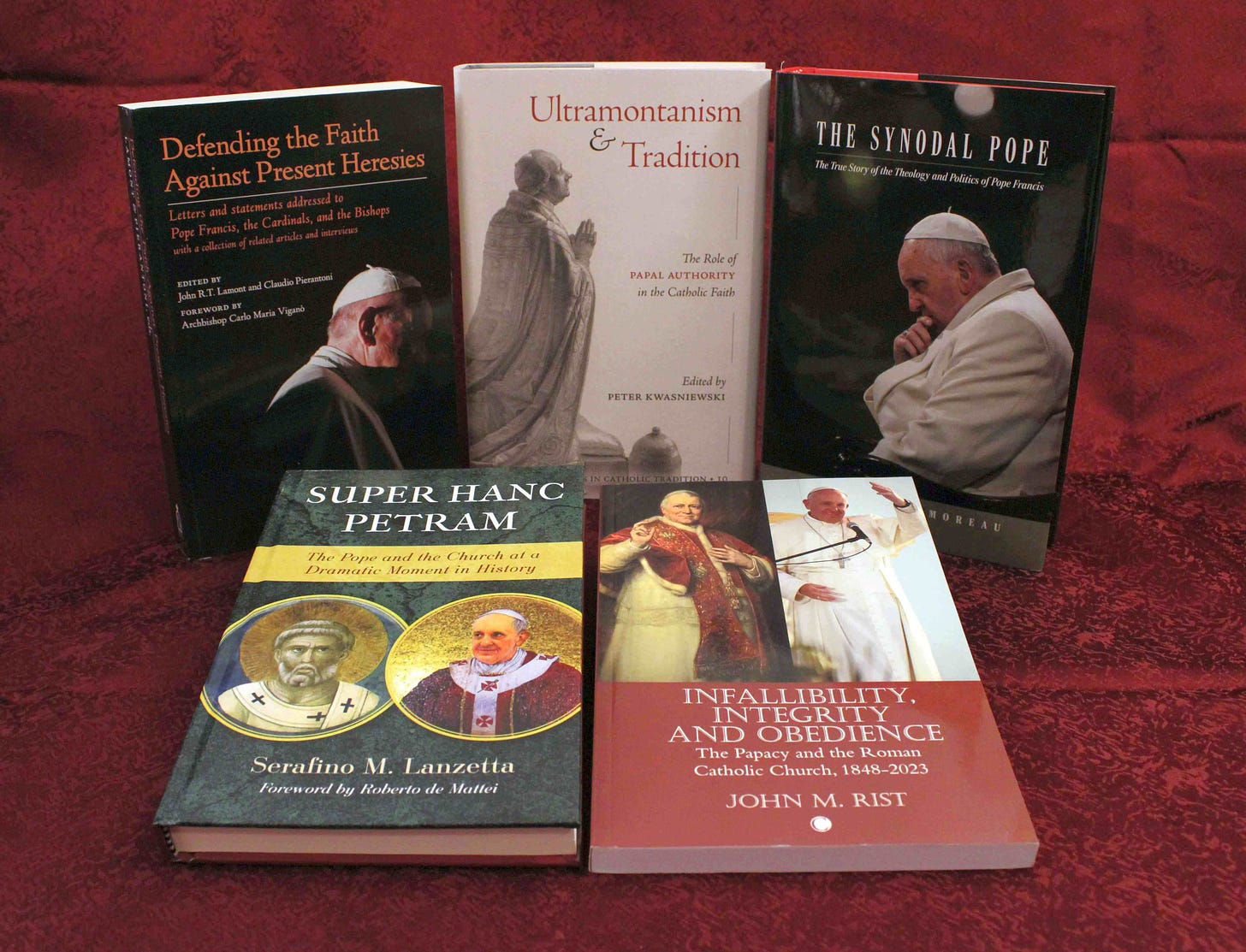
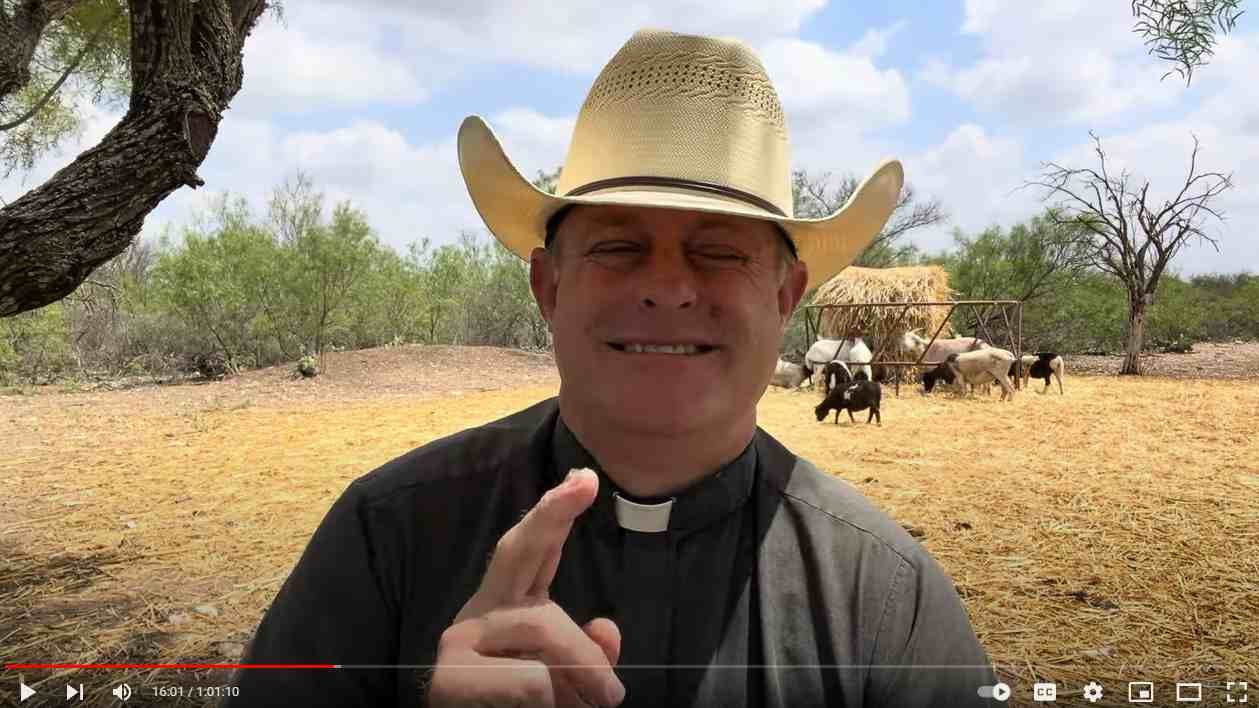
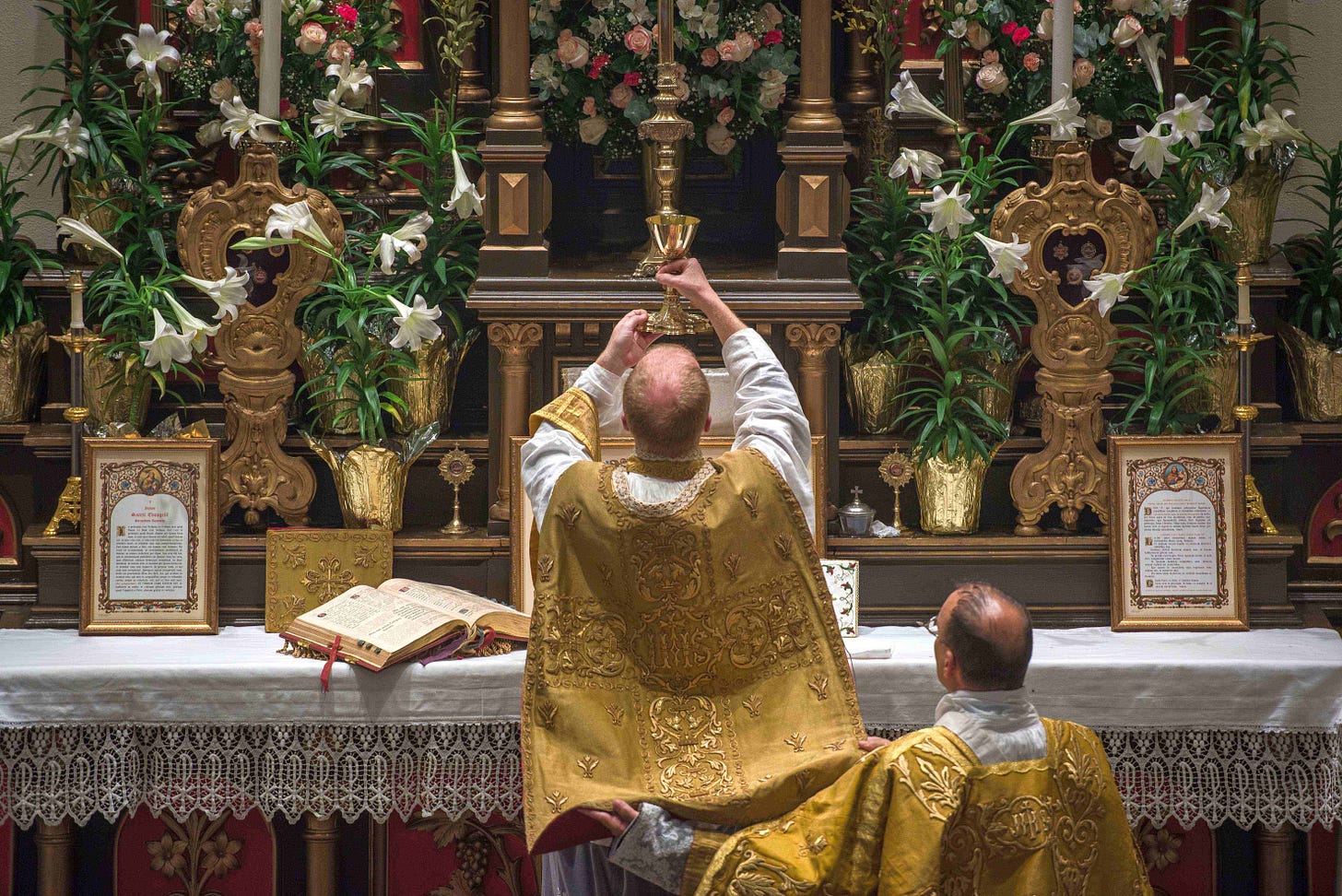
Very informative article, many thanks. Has there been anything scholarly, just, and traditional, that has been written in book form, regarding the canonisations of the Popes of rupture? I can't help but be reminded of one of the greatest challenges to the intellect; that of the saintly appellation attached to their names. What will the next 10 years bring? I shudder to think.
Finished Super Hanc Petram earlier this week. Wonderful book put out by Os Justi. Concise, to the point, and tells you what you need to know about the theological and philosophical implications of the Franciscan papacy.